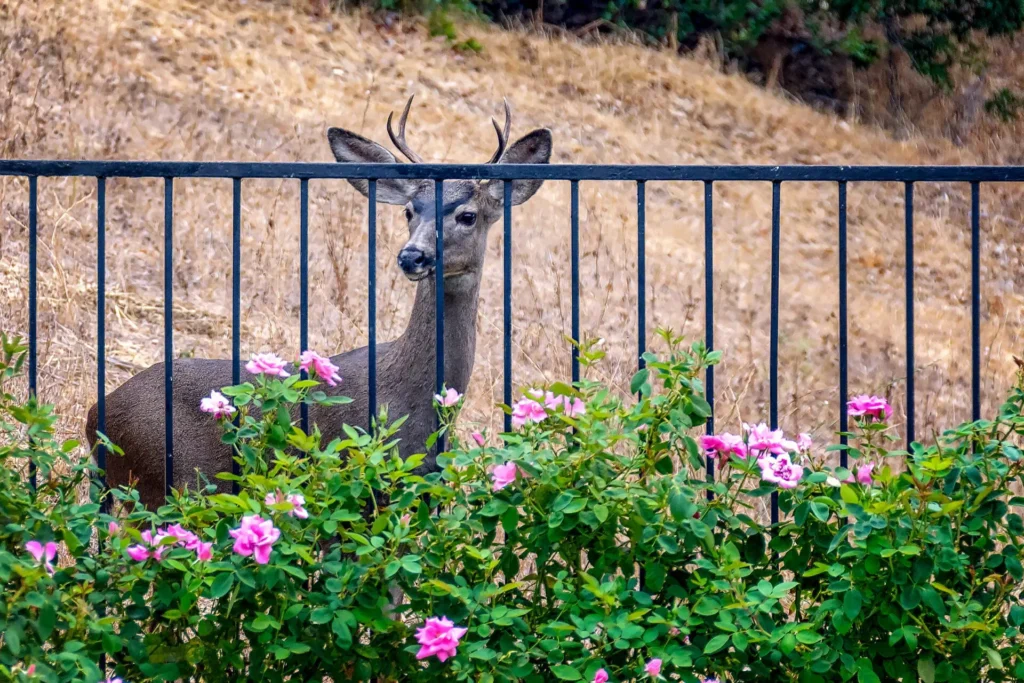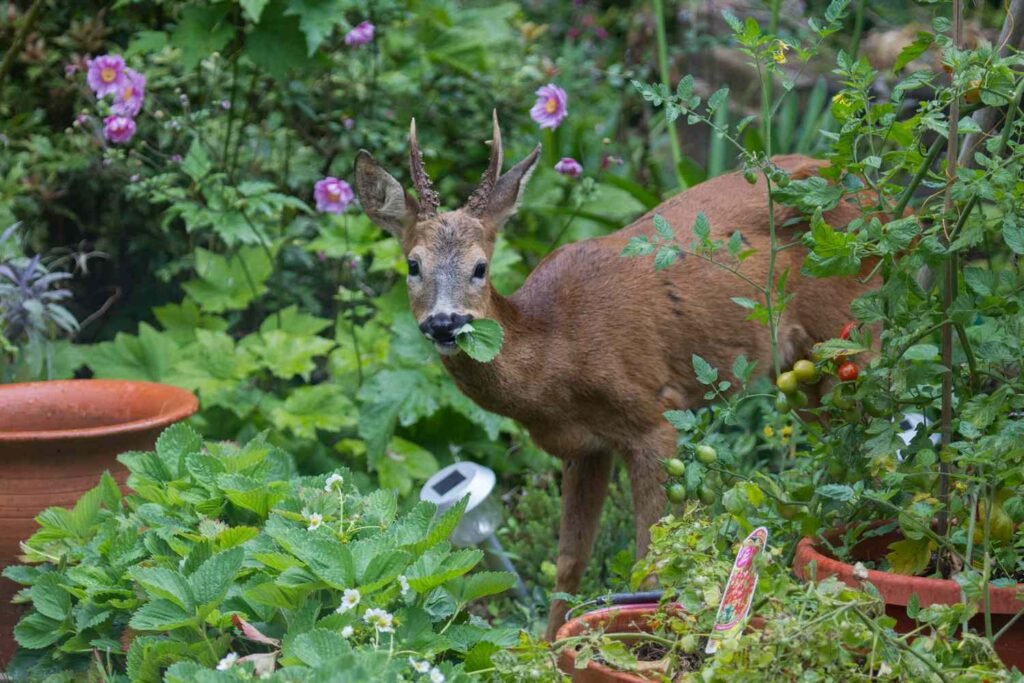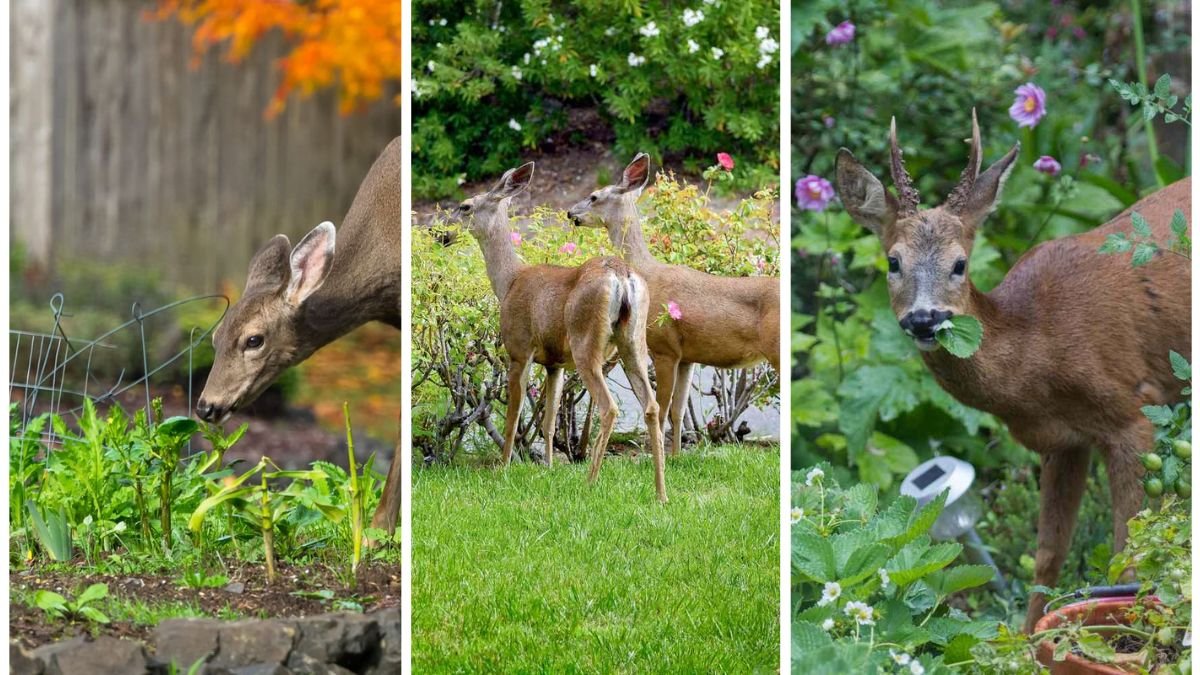Few things are more heartbreaking for a gardener than stepping outside in the morning to admire your carefully tended flower beds, only to find chewed leaves, missing blossoms, or trampled stems. While rabbits, insects, and other critters can certainly wreak havoc, deer are often the main culprits behind large-scale damage to flowers. These graceful animals may look innocent, but their browsing habits can devastate a garden overnight.
If you’re tired of deer turning your flowers into their midnight buffet, don’t worry—there are effective, humane, and sustainable strategies to protect your plants. In this guide, we’ll explore how to identify deer damage, why deer are drawn to your flowers, and the best natural and practical methods to keep them at bay without harming them.
Understanding Deer Behavior in the Garden

To protect your flowers, it’s important to first understand why deer are so attracted to them. Deer are herbivores with a preference for tender, nutrient-rich plants. Flowers often top their menu because of their:
- Tender new growth – Soft shoots, buds, and young leaves are easy for deer to chew.
- Fragrance – Many flowering plants release scents that attract deer.
- Accessibility – Flower beds at ground level are easy targets compared to taller trees.
Deer are especially active in spring and summer when food is abundant, but they’ll continue browsing into fall and winter when resources become scarce. Since they are creatures of habit, once deer discover your garden, they are likely to return frequently.
Signs of Deer Damage

Before you take action, confirm that deer—not rabbits, insects, or other pests—are responsible for the damage. Some telltale signs include:
- Jagged edges on leaves and stems – Deer lack upper front teeth, so they tear vegetation, leaving uneven edges.
- Missing buds and blossoms – Flowers like roses, tulips, and daylilies are often eaten whole.
- Trampled soil or broken stems – Deer are large animals, and their movement can flatten delicate plants.
- Deer tracks or droppings – Hoofprints and small pellet-like droppings are strong indicators.
Identifying these signs ensures you’re dealing with deer rather than misdiagnosing the problem.
5 Effective Strategies to Protect Your Flowers from Deer
1. Plant Deer-Resistant Flowers
One of the easiest long-term solutions is to design your flower beds with plants that deer find unappealing. While no plant is 100% deer-proof, many are strongly disliked because of their scent, texture, or toxicity.
- Strongly scented plants: Lavender, marigolds, Russian sage, and rosemary.
- Fuzzy or prickly plants: Lamb’s ear, yarrow, and hollyhocks.
- Toxic plants (to deer): Foxglove, daffodils, and monkshood.
By mixing deer-resistant species into your beds, you create a natural deterrent that makes your garden less inviting.
2. Use Deer Repellents (Natural & Homemade Options)

Repellents work by targeting a deer’s sense of smell and taste. You can find many commercial sprays, but homemade and natural options are effective and eco-friendly.
- Homemade garlic spray – Blend garlic, water, and a bit of dish soap, then spray on plants.
- Egg-based spray – Rotten egg odor deters deer strongly. Mix one raw egg with water and spray around flowers.
- Herbal deterrents – Planting strong-smelling herbs like thyme, oregano, and mint around flower beds helps mask the scent of attractive flowers.
Pro tip: Rotate repellents regularly. Deer can get used to a single method, so alternating keeps them on edge.
3. Install Fencing and Physical Barriers
If deer pressure in your area is heavy, fencing may be the most reliable solution.
- Tall fences – Deer can jump high, so fences should be at least 7–8 feet tall.
- Angled or double-layer fencing – A shorter angled fence can deter them since deer dislike unstable landing areas.
- Netting or chicken wire – Useful for protecting individual flower beds or prized plants.
For smaller spaces, even placing decorative cages or netting around specific plants can work wonders.
4. Scare Tactics and Motion Devices
Deer are cautious animals, and sudden movement or sound can startle them away. Modern garden technology makes it easier than ever to scare off deer without constant monitoring.
- Motion-activated sprinklers – These spray water when movement is detected, surprising deer without harming them.
- Ultrasonic repellents – Emit sounds that deter deer but are inaudible to humans.
- Reflective objects – Hanging aluminum foil strips, CDs, or wind chimes can create light flashes and noises that discourage deer.
Note: Scare tactics work best when combined with other methods since deer may eventually realize there’s no real threat.
5. Strategic Garden Design

The way you design your garden can naturally discourage deer.
- Layering plants – Place deer-resistant plants on the outside of flower beds and more vulnerable species in the middle.
- Raised flower beds – Elevating flowers makes them less accessible.
- Companion planting – Surround vulnerable flowers with plants that deer dislike. For example, planting lavender around roses creates a fragrant shield.
Thoughtful design not only beautifies your space but also doubles as a defensive strategy.
Extra Tips for Long-Term Deer Management
- Alternate methods each season: Deer are intelligent and adaptable. Switching up repellents and deterrents prevents them from becoming accustomed.
- Remove attractants: If you have fruit trees, fallen fruit can draw deer closer to your flowers. Keep the area tidy.
- Community solutions: If deer pressure is strong in your neighborhood, coordinate with neighbors. Collective action (like fencing or community repellents) can reduce deer activity for everyone.
Common Mistakes to Avoid

- Relying on one method only – Deer are persistent. A combination of deterrents is always more effective.
- Ignoring the seasons – Deer eat different plants depending on the time of year. What works in summer may not be enough in winter.
- Using harmful methods – Avoid poisons or traps. These not only endanger deer but can also harm pets, children, and other wildlife.
Conclusion
Deer may be beautiful creatures, but they don’t mix well with carefully cultivated flower gardens. By understanding their behavior and applying a mix of preventive strategies—like planting deer-resistant flowers, using natural repellents, installing barriers, and designing smarter beds—you can protect your blooms without harming local wildlife.
The key is consistency and adaptability. No single method will work forever, but combining approaches creates a strong line of defense. With the right strategies in place, you’ll be able to enjoy vibrant, deer-free flowers all season long.
